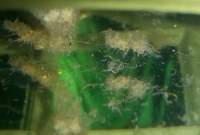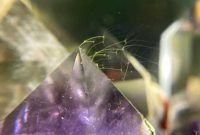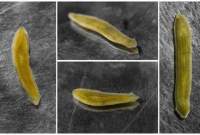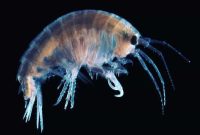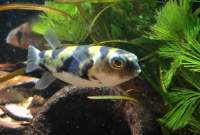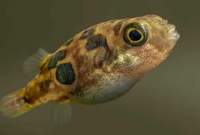Most fish hobbyists certainly know about molly fish. These freshwater fish are so famous due to having lovely patterns, colorful, and definitely cheap. But have you ever heard the question ‘do mollies can eat algae?’ and the myth that they are able to live in a saltwater environment?
You come to the right place to find out the answers to that question. This time, we will thoroughly discuss the correlation between mollies and algae.
If this content is helpful, please share it to your friends through your social media, etc.; let’s read!!
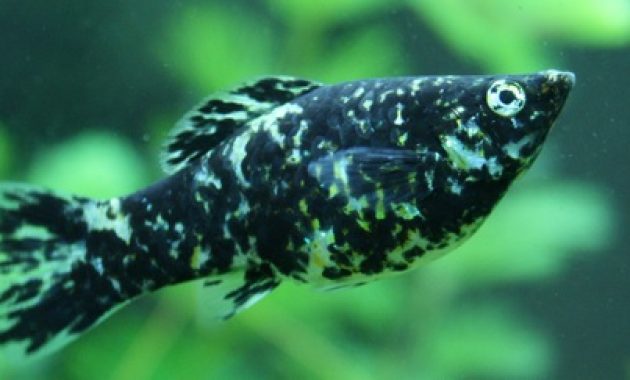
TABLE OF CONTENTS
What Are Algae?
They are members of a group of photosynthetic organisms under the kingdom of Protista. Algae take an essential role as the primary food for many fish species and other aquatic creatures.
Alga (for singular) is a great microorganism that offers many benefits, but for aquarists like us, they are pests, and the pests must be eradicated.
An overgrowth of algae makes your fish tank dirty and unsightly. You should know if the algae can develop in every aquatic ecosystem.
Keeping a planted tank always free from algae is almost impossible; they can happen in young and mature fish tanks. Do not be afraid; their growth can be controlled to decrease to a lower level and is tolerable.
Before deciding to fight the algae, you should know the leading cause ‘why do they grow inside your tank?’
Algae flourish when there is an imbalance between the lighting and nutrients in the aquascape ecosystem. If your freshwater tank is exposed to too much light while lacking nutrients, it will stimulate them to bloom.
If you supply high doses of dissolved nutrients and reduce the light intensity, algae would take advantage of this condition to present in the aquarium.
Well, the solution is to maintain the nutrients and light keep balance in the water. Unluckily, stabling both of these two components is unachievable because the aquatic plants grow continuously and consume more and more nutrients.
There are many chemical products on the trade that can go against the algae. Although you think one of those medicines is suitable for aquariums, it might still have some effects that can be dangerous to your fish.
Moreover, you also need to add this product regularly to prevent the algae grow back. Of course, it takes up too much time and money. So, balancing the aquarium ecosystem is the best way.
Is It Possible Algae Kill A Fish?
In nature, algae are a source of life for many aquatic creatures. But, the excessive algae population can deplete the dissolved oxygen in the water.
When the water did not contain a sufficient oxygen level, all animals population in these places would compete for it. Instead of helping, algae probably kill them.
This situation typically happens in smaller water systems like small lakes, ponds, swamps, and ditches.
Indeed, it can also occur in home aquaria environmental. If their growth is uncontrolled, the excessive algae are harmful to the fish in the aquarium.
How do we resolve this issue?
As much as mentioned previously, balancing the elements like nutrients and light, then keep watching those frequently. To maximize, add some algae cleaner like mollies. They are known to be good at eating algae inside the aquarium while adorable in appearance.
What Are Mollies Fish?
Molly is freshwater fish species that come from the Poeciliidae family, the same as platies and guppies. They are native to Central America, like the southern United States and Mexico.
These fish thrive in tropical water environments but can also occur in saline habitats such as brackish ditches and lagoons.
Some species are known live and spawn in shallow saltwater territories like harbors and some areas around the mangrove’s submerged roots.
They are usually discovered in water bodies such as streams, lakes, rivers, marshes, swamps, deltas, estuaries, and shallow surface waters.
Mollies are common animals and easy to find in their wild habitats. The wild-caught molly fish are dull; most are silvery-gray in color. While the captivity form is colorful, having a beautiful body and fins shaped.
Depending on their species variety, an adult molly can grow and reach about 2 to 5 inches (5 – 13 cm). Their lifespan also varies; on average, most fish live for 3 to 5 years in captivity.
Almost all of the subspecies of mollies grow well under any aquarium setup. They can survive in a wide range of environments, making them used by many aquarists and becoming one of the most popular freshwater small fish until now.
Some maybe need a specific condition to live; for example, a few molly species need some amount of salt that should be mixed into their tap water. Although, they are still easy to care for and suitable for beginners.
Due to their tiny size, they do not take many spaces. A 10-gallon aquarium is enough to cover up to 4 individuals, followed by 3 gallons per extra fish.
Mollies are widely available in fish stores and online; a single fish is between $2 to $8, depending on the seller and their type.
They belong to the livebearer species and have the ability to reproduce quickly. Besides, the mollies also can help your tank stay clean and healthy.
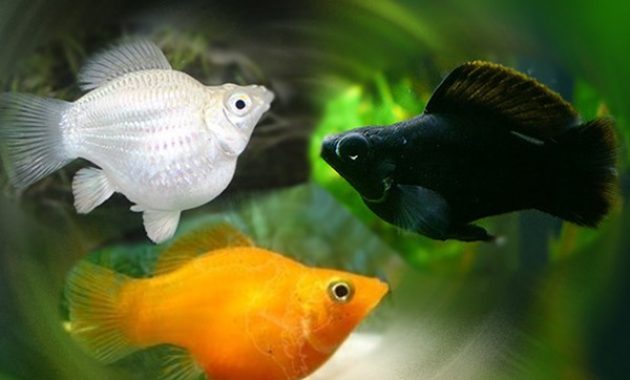
Type Of Mollies
Besides the ability to eliminate alga, they offer a fantastic view inside the tank, both of their appearance and endearing habits.
It makes the owner happy to spend more time sitting near the fish tank to watch them. Here are several popular types of mollies that are usually seen in pet stores:
- Sailfin mollies
- Silver/white sailfin molly
- Harlequin sailfin molly
- Golden sailfin molly
- Creamsicle sailfin molly
- Black sailfin molly
- Ballon belly molly
- Dalmatian molly
- Gold dust molly
- Gold doubloon molly
- Lyretail mollies
- Platinum lyretail molly
- Marble lyretail molly
- Black lyretail molly
- Dalmatian lyretail molly
Do Mollies Really Eat On Algae?
The common question we often hear is, “which types of mollies are really eating on algae?”. Honestly, all varieties of them consume algae. That said, the black mollies species are the most effective at eating algae.
They are omnivorous; they feed on plant matter, algae, soft plants, and tiny organisms in the wild. While in captivity, the breeders usually introduced conventional food such as pellets and flakes.
To complete their nutrients, they also should accept some live or frozen diets such as brine shrimps, bloodworm, tubifex worm, and even some boiled vegetables.
In many cases, several aquarium enthusiasts found their mollies prefer to eat algae that naturally develop in the fish tank than dried food from the stores. Well, you have a solution to deal with algae outbreaks.
But, before you go to purchase some mollies at the nearby pet shops, there are a few things that you should find out. Keep reading!
Can The Truly Algae Eaters Keep Alongside With Mollies?
Yes, you could leave them in the same tank, which will increase the chance of conquering the algae. Moreover, it would be best if you were selective in selecting their tankmates; some species may cause conflicts with them.
Make sure to not put too large or smaller algae eater crew in order to prevent bullying between each other.
What kind of algae eater species can live with mollies?
If you against a huge certain algae plague, mollies might be doing not an effective one to have. So, you need some pure algae eaters to help them. Here is the list that you can introduce alongside them:
- Siamese algae eater (SAE)
- Otocinclus catfish
- Bristlenose plecos
- Chinese algae eater (CAE)
- Siamese flying fox
- Twig catfish
- Whiptail catfish
- Bulldog pleco
- Pitbull pleco
- Malaysian trumpet snails
- Ramshorn snails
- Nerite snails
- Apple snails
As you can see, we do not add any shrimp species to this list because they love making them as their snacks, especially the shrimp fry. So, if you want the mollies to focus graze on algae, never add shrimps to your aquascaping setup.
What Algae Species Do Mollies Eat?
There are a few types of freshwater algae that commonly appear in the aquarium. And the question is, which types of algae that mollies eat? Let’s begin to discuss this chapter.
Do Mollies Eat Green Hair Algae?
These algae varieties most often thrive in the aquarium and become the favorite meal for most algae busters, including mollies.
Hair algae are divided into four subvarieties: oedogonium, rhizoclonium, cladophora, and spirogyra algae. They can grow almost the entire aquarium, attaching to decoration, plants, substrate, equipment, and even floating at the surface.
Mollies primarily feed on gentle green hairy algae; the fish usually nip little by little constantly until they are gone. The black molly tends to prefer grazing algae that develop on the surface of plants’ leaves.
You should severely underfeed them to rise their effectiveness. Do not worry, the green filamentous algae still provide enough nutrients, so do not think if your fish grows unoptimally.
Do Mollies Eat Black Beard Algae?
This variant is one of the tougher aquarium algae than other types. They are also called Black Brush Algae or BBA, typically appear in the fish tank as a dense clump or tuft with dark green to grayish tint.
BBA is one algae outbreak that makes many aquarium owners stressed because not many fish like to eat them. Most algae eaters too tend to dislike this variant; only two species, siamese algae eaters and Amano shrimps that proven well against black beard algae.
According to an experience from an aquarist in a forum, his balloon mollies chomp the black brush algae repeatedly, then prove effective. So, he recommended the molly to other people with .have same problem.
However, the mollies’ work probably can not be compared with SAE fish; but if you collaborate the molly with them, a powerful weapon is ready to rock.
Do Mollies Eat Blue Green Algae And Brown Algae?
Yes, many fish hobbyists agreed with the statement of mollies that eat BGA and brown algae. They keep some mollies for a long time and verify if they clean up these algae properly, certainly the hobbyists uniting them with pure algae eaters such as otto catfish.
Do Mollies Eat Staghorn Algae?
Sure, they really love this alga type, but you should make them hungry; it can stimulate them only to eat the staghorn.
The molly fish most prefer the young and the dead staghorn algae. Injecting some doses of flourish seachem excel straightforwardly can kill the staghorn algae, then these livebearers species will feast. You can do this treatment to other algae varieties that mollies liked.
But, there is no report about other red algae families (red spot algae) seen in the aquarist tank grazed by mollies; remember, this type rarely occurs.
Sadly, the staghorn algae contain fewer nutrients, which means you should give other varied food, especially live food, to complete their needs.
Do Mollies Eat Fuzz Algae?
Probably yes, remember the fuzz algae is part of green filamentous algae, which is their main favorable diet. Unfortunately, other green algae forms, such as green dust algae and green spot algae, might be won’t by the molly fish.
Do Mollies Eat Surface Scums?
Yes, most of them love the scum layers at the surface of the fish tank. It contains many bacteria that are beneficial for them. Some fish tank owners tell us since their mollies moved to another tank, the scum films arise in their main setup. It means as long as these fish settle in the main aquarium, they eat the main bacteria forming surface scums.
Other hobbyists also make a related statement that since he added some mollies to his tank, the surface scums are disappeared.
Mollies also are suitable for guarding your tank from some tiny aquatic parasites such as gammarus, planaria, hydra, and detritus worms.
Do Mollies Can Eat Algae In The Reef Or Saltwater Tanks?
Some people might be unexpected that mollies can live in a marine environment because most of these species they see at the aquarium shops are shown inside the freshwater display. It makes them assume that molly is pure tropical water fish species.
When understanding why mollies can live in the reef tank, you should remember that they naturally inhabit brackish water. While brackish water itself consists of two different types, partly freshwater and another side is salty water. This makes them able to adapt to both tropical and sea environments.
The sailfin and giant sailfin molly is the most recommended mollies variety by many marine tank keepers. They are a good hunter, nipping algae on corals like a pro. However, the black mollies still get high ranks from the hobbyists too.
Drip acclimation is a method to turn mollies from freshwater to saltwater inhabitants. This process typically needs about 3 – 4 hours; after it finishes, they can switch to completey to the water type they want. Other mollies variants that are suitable for drip acclimation that is:
- Platinum Lyretail Molly
- Marble Lyretail Molly
- Dalmatian Lyretail Molly
- Black Lyretail Molly
- Gold Dust Molly
- Harlequin Sailfin Molly
- White / Silver Sailfin Molly
- Dalmatian Molly Fish
- Balloon Belly Molly Fish
- Yucatan Mollies
How To Acclimation The Freshwater Mollies To The Saltwater Aquariums
If you are surfing on the internet, you might find many different methods to transition mollies from freshwater to saltwater.
The common ways range from just dropping these fish directly into a marine aquarium and leaving them to acclimate to a new environment for a couple of weeks. Nonetheless, this way results in varying degrees of success.
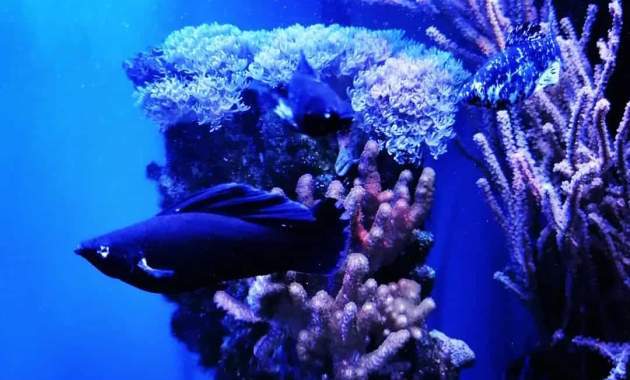
First Step, Prepares All Required Supplies
You would need some stuff, including:
- Fish net
- A few old towels
- Airline hose
- A 5-10 watt heater, set the temperature around 78°F
- A clean 5-gallon bucket
- Air pump
Step Two, Put Your Mollies Into The Bucket
Place the molly fish into the clean bucket with the water from the fish bag or their tank.
Step Three, Add Heater And Aerators
Generally, most aquarists do not use heaters during the acclimation process. It makes the transition of the mollies to saltwater type going slowly because without any the heater. The water in the bucket would drop to the surrounding ambient room temperature quickly.
Installing an air pump is necessary to supply oxygen for them; they will feel comfortable and raise their life rates.
Step Four, Secure The Airline Hose
Put one of the end airline hose below the surface of saltwater aquarium water and tie it; this will make the airline stay in the same position and not fall for several hours. Check back again to confirm the airline hose is not pinched, or the water from the can not flow.
Step Five, Set The Drip Rate
Suck off another end of the airline hose to make the water from the tank move. Assure to release it from your mouth before the salty water reaches you. Tie the other end of the airline hose that you sucked before that aims to the bucket; the tighter it, the slower drip-rate.
Two drips per second are enough; after that, enter the end of the hose into the bucket.
Step Six, Switch Off Automatic Top-Off (ATO) Systems
It should be turned off if you installed an ATO system in your aquarium. This can avoid switching the saltwater that is withdrawn to the bucket with the freshwater and disordering the salinity of the reef tank.
Step Seven, Prepare New Water
Lossing 2-3 gallons of water in the nano reef tank is significant during this process. It’s time to prepare new salt water to add to your marine aquarium after the acclimation of mollies is completed. Make sure the salinity and temperature of this water are matched.
Step Eight, Remove The Water
When the drip acclimation has been operating for one hour, eliminate half of the water volume from the bucket, then dispose of it.
Repeat this process every thirty minutes until the mollies bucket’s water has salinity levels similar to your marine aquarium. This process commonly spends much time, around 3 – 4 hours. Adjust the drip rate to reach the numbers you need.
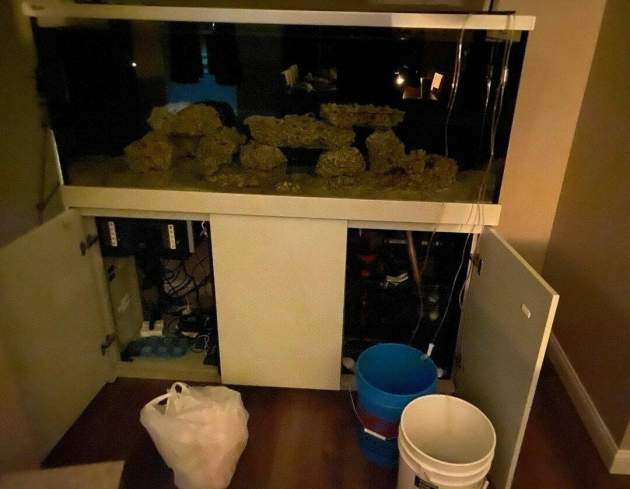
Step Nine, Quarantine Your Molly Fish If Possible
This phase is optional; if you want and then have a quarantine tank, it would be better for your fish to be quarantined first before being added to the main tank. This is very useful to prevent your aquarium populations from getting some potential diseases that the mollies bring when entering the tank.
Step Ten, Prepare Your Saltwater Tank
Before adding the fish, ensure to switch off the aquarium lighting. It will allow your mollies to hide on the first time they enter the tank, if they want.
Take a net, scoop up the mollies, and put them down carefully into the tank. Pour a small amount of food at the opposite end of the tank. It may slightly help to avoid some aggression from the tank inhabitants in their first introduction.
saltwater mollies eat algaeStep Eleven, Replace The Water
You should fill up back the aquarium with salty water, replacing the water that was eliminated during the mollies acclimation process. It aims to restore the water level back to its normal height. Next, turn back on the Automatic Top-Off (ATO) system.
Step Twelve, Keep Watch Out Your Mollies
Keep your aquarium lighting off for the rest of the day. It can help them to adapt and find a fine place to settle temporarily.
Please do not feed them during this period; remember you were feeding your tank population, and it probably causes the mollies can be stressed.
Constantly monitor your fish to see the sign of breathing heavily and distress; even if your mollies die, remove them immediately and dispose of them. If your mollies successfully adapt to the new environment, enjoy it and wait for them to start to work on eating the algae.
Note: you probably have to try a couple of times before being successful because the fish quality is very crucial.


